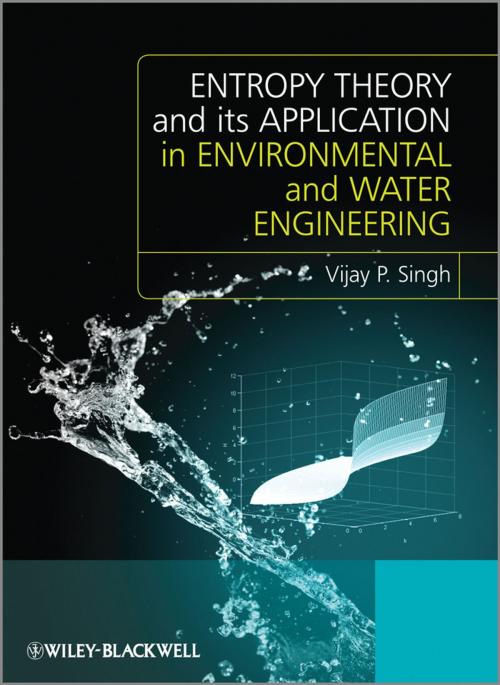Entropy Theory and its Application in Environmental and Water Engineering
Nonfiction, Science & Nature, Science, Earth Sciences| Author: | Vijay P. Singh | ISBN: | 9781118428603 |
| Publisher: | Wiley | Publication: | January 10, 2013 |
| Imprint: | Wiley-Blackwell | Language: | English |
| Author: | Vijay P. Singh |
| ISBN: | 9781118428603 |
| Publisher: | Wiley |
| Publication: | January 10, 2013 |
| Imprint: | Wiley-Blackwell |
| Language: | English |
Entropy Theory and its Application in Environmental and Water Engineering responds to the need for a book that deals with basic concepts of entropy theory from a hydrologic and water engineering perspective and then for a book that deals with applications of these concepts to a range of water engineering problems. The range of applications of entropy is constantly expanding and new areas finding a use for the theory are continually emerging. The applications of concepts and techniques vary across different subject areas and this book aims to relate them directly to practical problems of environmental and water engineering.
The book presents and explains the Principle of Maximum Entropy (POME) and the Principle of Minimum Cross Entropy (POMCE) and their applications to different types of probability distributions. Spatial and inverse spatial entropy are important for urban planning and are presented with clarity. Maximum entropy spectral analysis and minimum cross entropy spectral analysis are powerful techniques for addressing a variety of problems faced by environmental and water scientists and engineers and are described here with illustrative examples.
Giving a thorough introduction to the use of entropy to measure the unpredictability in environmental and water systems this book will add an essential statistical method to the toolkit of postgraduates, researchers and academic hydrologists, water resource managers, environmental scientists and engineers. It will also offer a valuable resource for professionals in the same areas, governmental organizations, private companies as well as students in earth sciences, civil and agricultural engineering, and agricultural and rangeland sciences.
This book:
- Provides a thorough introduction to entropy for beginners and more experienced users
- Uses numerous examples to illustrate the applications of the theoretical principles
- Allows the reader to apply entropy theory to the solution of practical problems
- Assumes minimal existing mathematical knowledge
- Discusses the theory and its various aspects in both univariate and bivariate cases
- Covers newly expanding areas including neural networks from an entropy perspective and future developments.
Entropy Theory and its Application in Environmental and Water Engineering responds to the need for a book that deals with basic concepts of entropy theory from a hydrologic and water engineering perspective and then for a book that deals with applications of these concepts to a range of water engineering problems. The range of applications of entropy is constantly expanding and new areas finding a use for the theory are continually emerging. The applications of concepts and techniques vary across different subject areas and this book aims to relate them directly to practical problems of environmental and water engineering.
The book presents and explains the Principle of Maximum Entropy (POME) and the Principle of Minimum Cross Entropy (POMCE) and their applications to different types of probability distributions. Spatial and inverse spatial entropy are important for urban planning and are presented with clarity. Maximum entropy spectral analysis and minimum cross entropy spectral analysis are powerful techniques for addressing a variety of problems faced by environmental and water scientists and engineers and are described here with illustrative examples.
Giving a thorough introduction to the use of entropy to measure the unpredictability in environmental and water systems this book will add an essential statistical method to the toolkit of postgraduates, researchers and academic hydrologists, water resource managers, environmental scientists and engineers. It will also offer a valuable resource for professionals in the same areas, governmental organizations, private companies as well as students in earth sciences, civil and agricultural engineering, and agricultural and rangeland sciences.
This book:
- Provides a thorough introduction to entropy for beginners and more experienced users
- Uses numerous examples to illustrate the applications of the theoretical principles
- Allows the reader to apply entropy theory to the solution of practical problems
- Assumes minimal existing mathematical knowledge
- Discusses the theory and its various aspects in both univariate and bivariate cases
- Covers newly expanding areas including neural networks from an entropy perspective and future developments.















